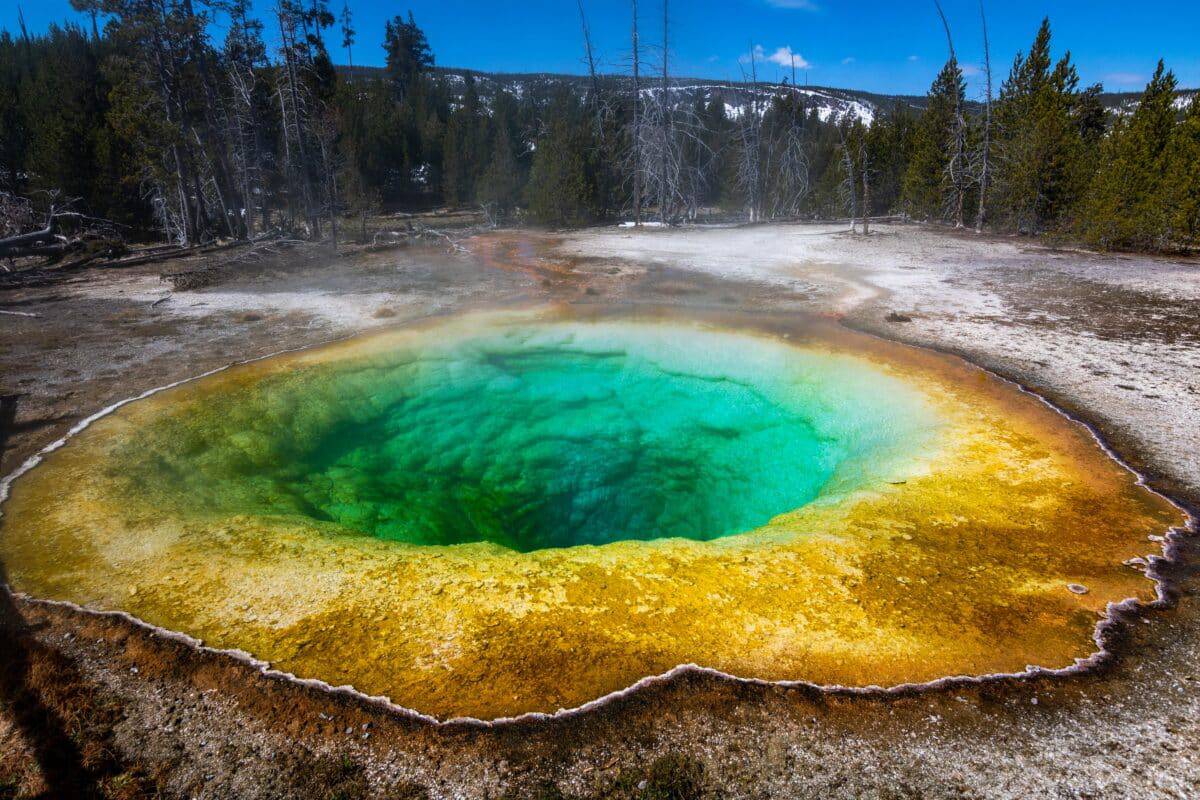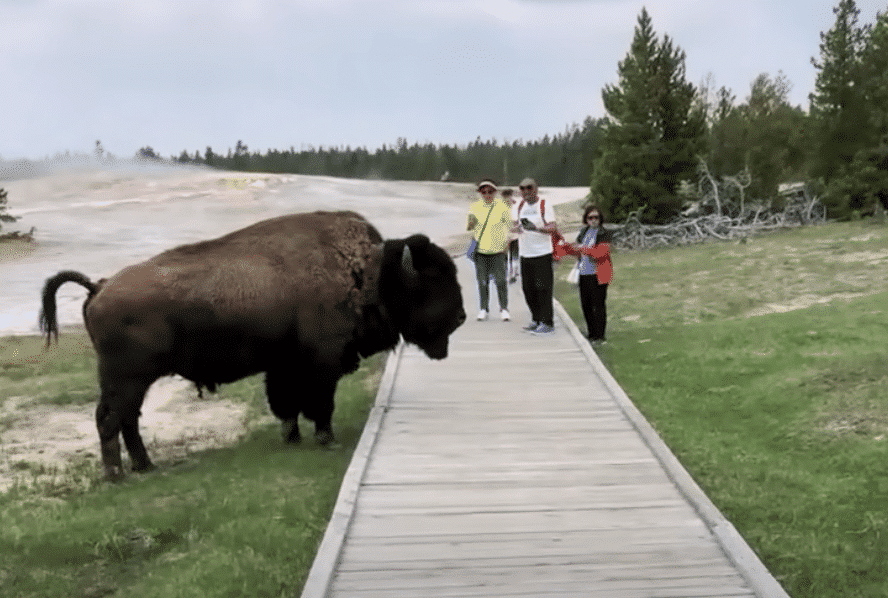Yellowstone National Park authorities continually emphasize the importance of maintaining a safe distance from the park’s wild animals. Despite these warnings, some tourists still insist on seeking out encounters with wildlife.
Since Yellowstone’s opening for the 2023 season two months ago, tourists have noticed a notable increase in lawbreaking. This has been captured on camera where visitors have attempted to interact with wildlife. Unfortunately, some of these interactions have resulted in the death of park animals.
In a recent statement, the National Park Service (NPS) urged tourists to maintain a safe distance from the animals. This is following a tragic incident where a man attempted to “rescue” a bison calf, leading to the calf’s rejection by its herd and eventual euthanasia.
Bison interactions are the most documented because of the large number of bison spread throughout the park. Despite their fluffy appearance and seemingly calm demeanor, it’s crucial to remember that these animals are dangerous and unpredictable. In fact, bison are responsible for more injuries in Yellowstone than any other wildlife species.
While bison encounters are frequently captured on camera, they are not the sole instances of wildlife interactions recorded in the park. Just recently, two park visitors had a harrowing experience with a mother elk and her calf. This is when they attempted to take a close-up photo of the duo. The female elk, protecting her baby, charged at the visitors in an effort to safeguard her young one.
Why is this a problem?

such interactions between tourists and wildlife are hazardous for both the visitors and the animals. Let’s expand on this:
- Visitor Safety: Approaching wild animals, whether it’s a bison, elk, or any other species, puts tourists at significant risk. Wild animals can be unpredictable, and their behavior can change rapidly. A seemingly calm animal may become agitated or defensive in an instant, leading to potentially life-threatening situations. Charging, biting, or kicking are some of the defensive responses that animals can employ when they feel threatened.
- Animal Stress: When tourists encroach upon the personal space of wild animals or try to get too close for photographs, it causes stress to the animals. Stress can have detrimental effects on their health and well-being. Mothers with young offspring, like the mama elk and her calf may become particularly aggressive when they perceive a threat to their young.
- Violation of Park Regulations: Most national parks, including Yellowstone, have strict regulations in place to protect both visitors and wildlife. Approaching or attempting to interact with wildlife is typically prohibited for the safety of all involved. Visitors who ignore these rules not only jeopardize their safety but also face legal consequences, including fines and potential expulsion from the park.
- Impact on Conservation Efforts: Encounters with humans can disrupt the natural behaviors of animals, affecting their feeding, resting, and breeding patterns. This disruption can have long-term consequences for the health and conservation of wildlife populations within the park.
- Educational Opportunities Lost: National parks serve as valuable educational resources, offering insights into the natural world and the importance of preserving it. When tourists engage in reckless behavior around wildlife, it detracts from the park’s educational mission.
So what now?
When tourists disregard park rules in national parks, several solutions can be implemented to address the issue. These include enhancing enforcement through increased ranger presence and fines, conducting educational campaigns to raise awareness about the importance of adhering to regulations and the dangers of wildlife interactions, providing mandatory visitor orientation or training, creating designated wildlife viewing areas with proper barriers, implementing reporting systems for visitors to report violations, engaging local communities and tour operators in promoting responsible tourism practices.
Additionally, harnessing peer pressure and social media to encourage responsible behavior, temporarily closing high-risk areas when needed, collecting data to inform decision-making, and collaborating with conservation organizations for joint initiatives. A combination of these strategies, tailored to each park’s unique context, can help mitigate rule violations. This will ensure visitor safety and the preservation of wildlife and natural ecosystems.
Take a look at more tourist-widlife encounters here:
Tourist Turns Into Statue as Cheetah Invades Safari Vehicle
Yellowstone Tourist’s Rude Bear Chase Could Lead to Jail Time
Lion Shows Tourists Why You Must Stay Inside Your Car
- Discover: Top 12 American Animals and Wildlife - April 15, 2024
- 10 Animals That Hibernate Through the US Winter - April 12, 2024
- Watch: The Kleptomaniac Cat of Houston - April 2, 2024


Rosa
Thursday 21st of September 2023
People today are crazy they have no idea what a wild animal can do to them. If it attacks you then it's your incompetence on why so please let's not kill them because of that it's not the animals fault.